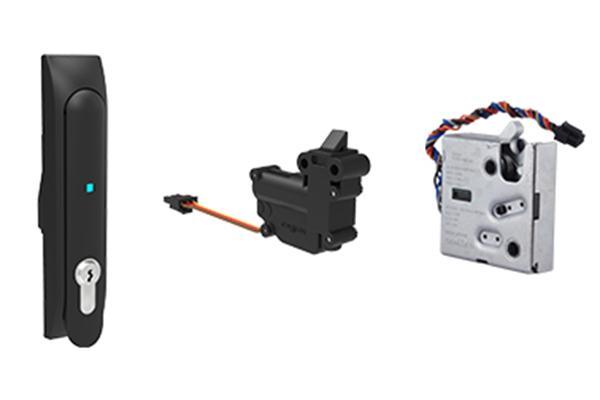Transitioning From Mechanical to Electronic Locking Devices

At one time or another you may have used a swipe card, a keypad or remote controlled device to gain entry into a secure room, building or vehicle, without giving thought to the system behind this convenient user interface. These electronic access systems incorporate electronic locks or latches (EMLs) to provide security for a variety of applications today from medical storage units and server cabinets to vehicle compartments and enclosures.
As consumers have grown accustomed to the security and convenience of electronic access systems, equipment OEMs have realized the need to transition from traditional mechanical locks to electronic locks due to the safety and convenience they provide. When integrated with a networked, remote monitoring system, these systems can provide electronic records of access activity which can be used to streamline security administration.
Electronic Access Solutions (EAS)
Engineers can simplify the transition from mechanical lock and key configurations to electronic access technology by integrating an appropriate Electronic Access Solution (EAS) into their application. An EAS consists of an EML, an access control device and a remote monitoring system.
The EML is the heart the system and is critical to the effectiveness of any remotely controlled EAS because it influences system electrical requirements, physical security, installation and operation, as well as the industrial design of the end product. The EML operates similarly to a mechanical lock, but its electronic capability allows it to be combined with an access control device to add an additional layer of security.
Access control devices actuate electronic locks by validating user credentials and producing a signal that unlocks the EML. Access control devices such as keypads, radio frequency (RF) proximity card systems, biometrics or other wireless systems can be combined with the EML or integrated to simplify installation.
Together with an access control device, EMLs communicate with external systems to create audit trails that can be viewed locally or remotely, on-site or off. Each time an EML is actuated, an electronic “signature” is created, and can be stored by an existing security network to monitor access. This record of electronic activity can capture location, date, time, duration of access and specific user credentials, which reduces reaction time in the event of a security breach. The information collected provides critical audit trail data required for compliance with directives such as the Health Insurance Portability and Accountability Act (HIPAA) and Sarbanes-Oxley.
The Heart of the System
Choosing the right EML depends on many factors. How the end user will monitor access and their need to balance convenience with security, for example, may impact how engineers incorporate the technology into their applications. EMLs can be customized to meet the needs of each application, and are available in a variety of mechanism types.
- Electronic Slide Bolt – This EML operates in a similar manner as a traditional door and may be mounted to the frame, rather than the door itself. The electronic slide bolt, such as Southco’s E-Keeper platform, is ideal for applications where space is limited, such as the drawers of a medical dispensing cart. In this case, the EML acts as an intelligent keeper or strike, releasing the door from the frame when actuated. The door can then be simply pushed closed against a spring-loaded slide bolt.
- Electronic Rotary Latch – This EML uses high-strength rotary action and concealed “push-to-close” convenience that is suitable for many types of applications, from vending machines to supply cabinets. When actuated, the efficient R4-EM Electronic Rotary Latch for example, releases the cam under heavy loads of up to 350 lbs with minimal power consumption of less than 500 milliamps.
- Electronic Locking Swinghandle – This EML electronically unlocks upon receipt of valid electronic input, enabling manual actuation of the handle. Primarily used on electronic enclosures such as datacenter server cabinets, the H3-EM Swinghandle has integrated sensors and multiple output signals to provide data for both local and remote monitoring of the lock status.
For added piece of mind, EMLs can also be equipped with a mechanical override system, which enables manual release in the event of a power failure.
Making the Transition
Electronic access control solutions offer manufacturers a means for increasing the level of security for their equipment. Security systems that provide flexible access control management, audit trail capability and a smooth transition from mechanical to electronic mechanisms allow engineers to simplify the design process for new application or the upgrade of an existing access system.
A reliable security system must include an efficient electronic lock. When combined with the appropriate access control device, a complete electronic access solution provides a secure means for remotely managing and controlling access to enclosures.



